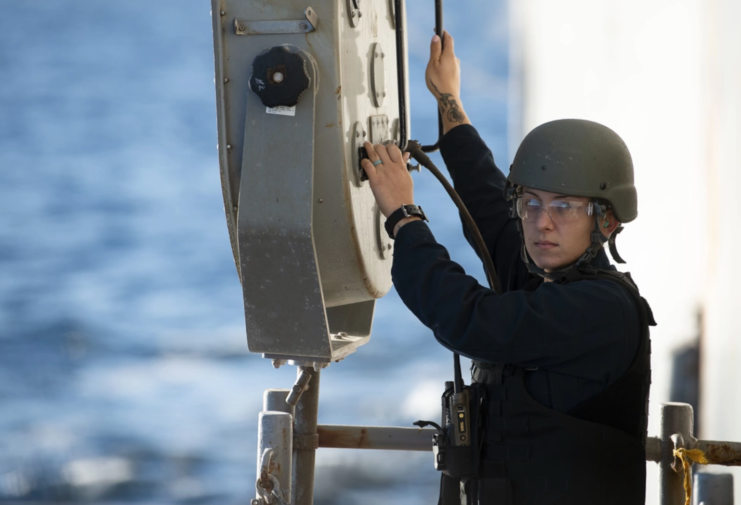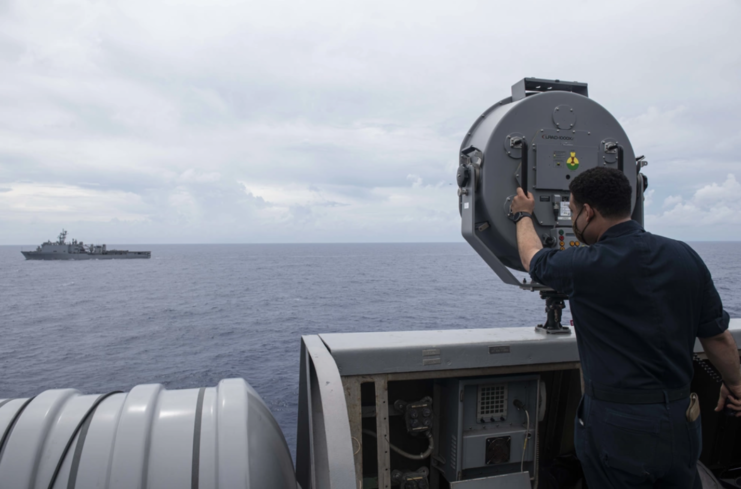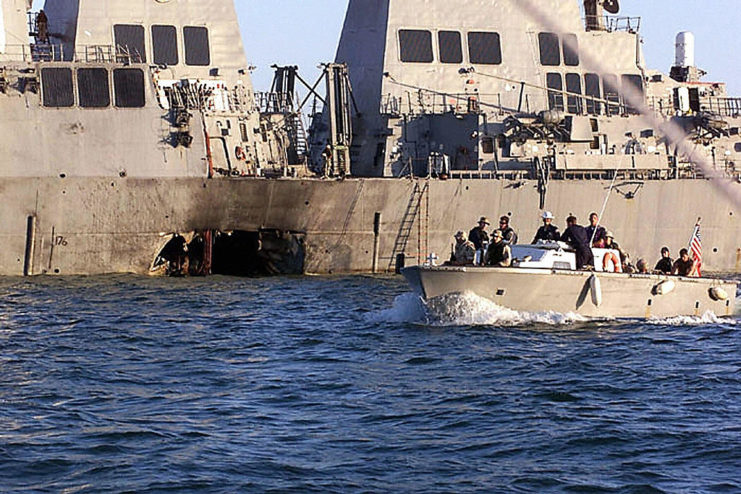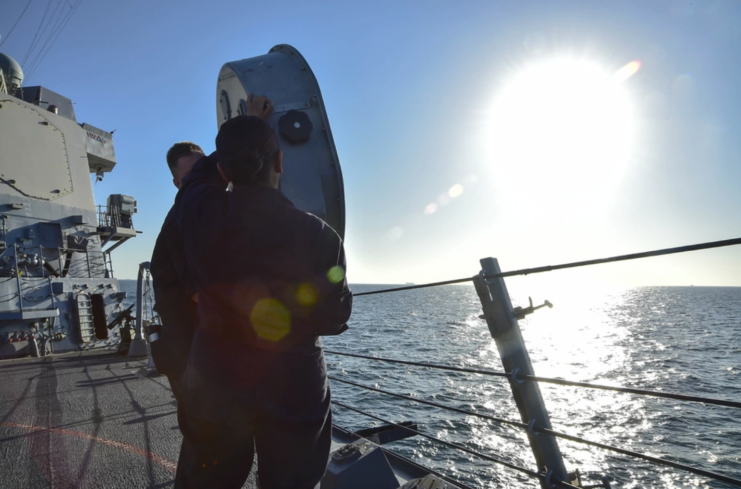A report from New Scientist has revealed the U.S. Navy has filed a patent for a new type of non-lethal weapon. Called acoustic hailing and disruption (AHAD), it is just the latest acoustic weaponry fielded by the U.S. Armed Forces.

The weapon is described as an electronic device that repeats a speaker’s own voice back to them – and only them – while they’re talking, disorienting them to the point where they’re unable to continue communicating. This is done by recording their speech and broadcasting it back to them in milliseconds.
The theory behind the tactic is that they’ll lose their concentration and stop speaking, according to the patent:
“A target’s speech is directed back to them twice, once immediately and once after a short delay. This delay creates delayed auditory feedback (DAF), which alters the speaker’s normal perception of their own voice.
“In normal speech, a speaker hears their own words with a slight delay, and the body is accustomed to this feedback. By introducing another audio feedback source with a sufficiently long delay, the speaker’s concentration is disrupted and it becomes difficult to continue speaking.”
The patent was filed in December 2019 by Christopher Brown, an engineer at the Naval Surface Warfare Center, Crane Division, a Navy research, and development facility in Bloomington, Indiana, and published in June 2021. The center develops handheld and crew-served weapons for military service.
AHAD’s components are rather simple, consisting of a microphone, a delay circuit, an amplifier system, a speaker system and a parabolic reflector. By using a series of directional microphones and speakers, it is able to broadcast the sound back in a narrow beam that is only heard by the target.
The behavior of the target will be noticeably altered, likely confusing those around them who are unable to hear the feedback. They will also experience mild pain and discomfort, migraines and ringing ears.
The patent also alludes to the fact AHAD could alter sound in an area, saying that “by aiming AHAD system at a wall or corner, AHAD system can also project sound to the target surface such that audio appears to originate from the target.”

It is important to note that AHAD will likely not see use on the battlefield and will instead be used as a form of crowd control. It joins other non-lethal weapons used by the U.S. Army, many of which have been used since the bombing of the USS Cole in Yemen in 2000.
This technology includes the Long Range Acoustic Device (LRAD), which can transmit focused sonic waves at high decibel levels, causing physical effects that can last up to one week. In 2013, the U.S. Navy awarded LRAD Corporation (now Genasays Inc.) with a $12.2 million contract to develop small, medium and large LRAD devices to “support large and small deck naval surface ships, submarines, security boats, and shore security operations in anti-terrorism/force protection missions.”

LRADs have been used for decades on military ships, at checkpoints and on other vehicles, largely to warn individuals they are approaching a restricted area.
“It is an audible cue to let people know not to come any further – targeting someone with a warning tone and speaking through this device,” said Navy Lieutenant Commander Lance Lantier in 2009. “Non-lethal weapons provide warfighters escalation-of-force options. It’s a matter of how we can first try to alter someone’s behavior without using lethal force.”

It’s currently unclear if the Navy has been able to produce a working model of AHAD.
